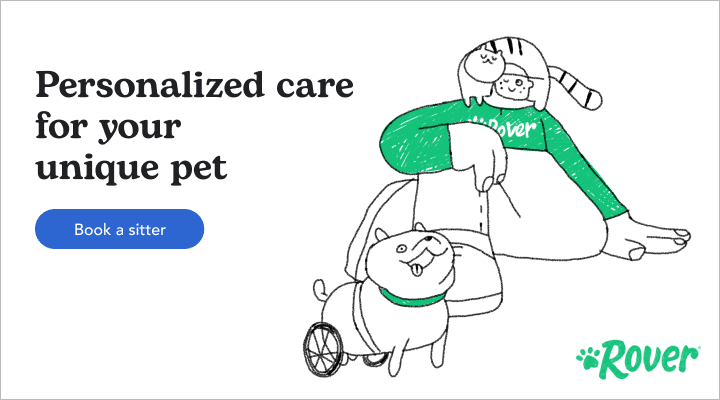
In 2024, it feels like the cost of everything has increased—but what about the cost of being a cat parent? How much does a cat cost per year? At Rover, we dug into the data. The annual cost of having a cat can range from $710-$2,865 a year, with the typical monthly cost landing between $60-$240. From 2023 to 2024, the cost has increased, on average, $70.
This change is driven largely by rising prices of pet food, at times costing up to 100% more than last year. In fact, cat parents report* being most financially impacted by increasing costs of essentials: pet food (63%), treats and toys (49%), and vet visits (43%).
People are also continuing to humanize their pets, treating them like members of their families and wanting the best, most premium products for them. This trend has widened the gap between the low and high end prices of pet products.
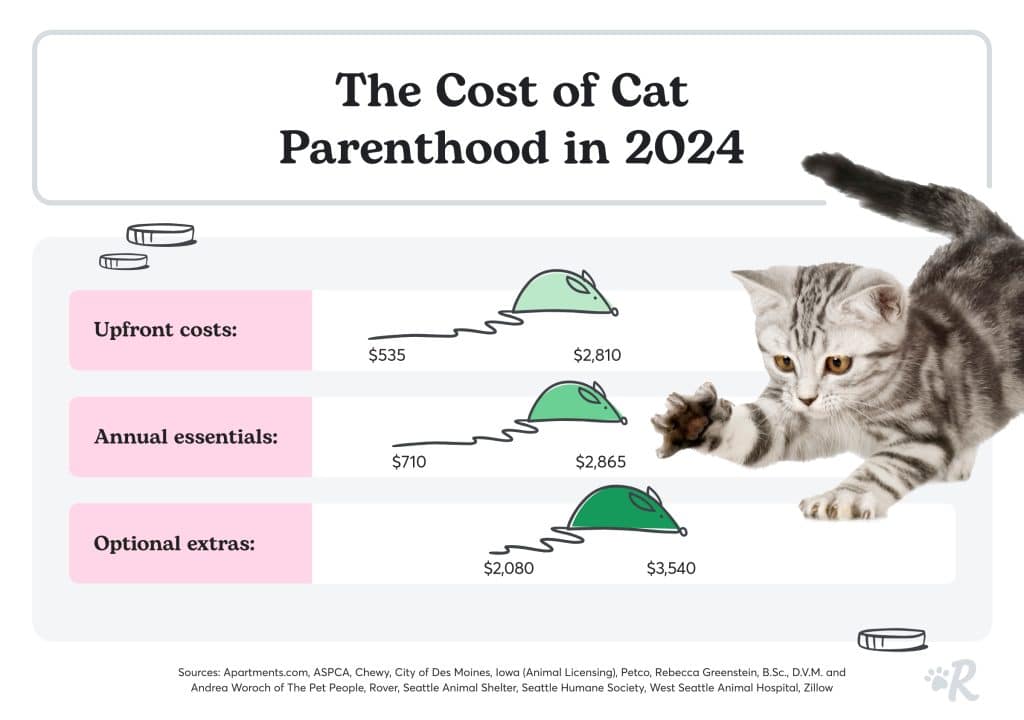
Let’s break the cost of cat parenthood down into four categories: upfront costs when you first bring your kitty home, annual essentials you’ll be buying every year, optional extras that vary based on factors like your cat’s breed, age, and lifestyle, and lastly the costs unique to senior kitties and end of life care, which we’ll explore at the end of this article.
Bringing a new cat home can come with a handful of surprising initial expenses. We’re here to demystify the budget. It’s not just kibble and litter that your cat needs.
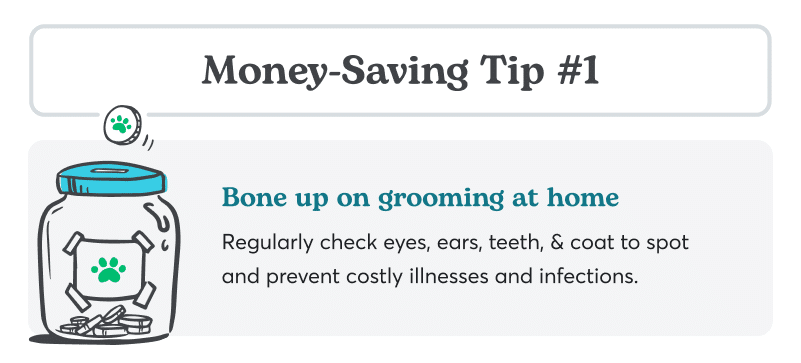
Grooming your pets at home doesn’t just save money by avoiding a trip to the salon, it can also help you spot illnesses and infections before they become expensive medical emergencies. Regularly check your pets’ eyes, ears, teeth, and coat as a free and easy way to prevent problems later on.
Cat Prices: How Much Does It Cost to Own a Cat?
When it comes to bringing a cat home, you can expect the upfront costs to range from $535–$2810 in the first year. Annual costs for cat essentials, from cat food and toys to litter, range from $710 on the low end to $2,865 on the high end. For cat parents who like to go all out, the optional extras cost between $2,080 and $3,540 per year. And if you have a senior cat or a kitty in end of life care, you could spend anywhere from $775 to $3,010 on their unique needs.
If this feels like a lot, take a look at the monthly breakdown where costs probably feel more manageable: between $60-$240 per month, with the median being $150.
How Much Does a Cat or Kitten Cost?
| Item | From | To |
|---|---|---|
| Adoption fees | $0 | $185 |
| Spay or neuter surgery | $165 | $250 |
| Microchip | $20 | $95 |
| Initial vet exam and vaccinations | $200 | $390 |
| Collar | $5 | $30 |
| Bed | $15 | $250 |
| Food and treats | $40 | $155 |
| Food and water bowls | $5 | $90 |
| Litter box | $10 | $550 |
| Litter | $10 | $90 |
| Pet license | $15 | $95 |
| Carrier | $20 | $160 |
| Scratching post | $20 | $300 |
| Brush | $5 | $50 |
| Claw trimmers | $5 | $40 |
| Toys | $0 | $80 |
| Total | $535 | $2,810 |
Let’s break these costs down.
First up, adoption fees
The cost of adopting a cat ranges greatly, from bringing home a cute, free kitten from your neighbor, to finding the perfect pet at your local humane society. You could even adopt through a speciality cat breeder, which could cost you upwards of $1000, though we didn’t account for those costs in our estimate this year.
For most people, adopting a cat will range from $0–$185. If your kitty isn’t spayed or neutered yet, keep in mind that those surgeries range in cost from $160–$250 for most cat parents, unless you adopt and they’ve already had it done.
Cost of cat vet visits
Other essential one-time costs include getting your cat microchipped ($20–$90) in case they ever get lost, and making sure they’re up to date on vaccinations, which typically cost $200–$390, including the vet exam visit. You may also be able to find low cost cat vaccination programs near you.
You’ll also want to factor in the cost of a pet license, which is usually fairly inexpensive, ranging from $15-$95, depending on the state you live in.
Cost of cat necessities
To help your new kitty feel at home and like part of the family, you’ll want to make sure you have the following:
- Cat carrier ($20–$160)
- Collar (up to $30)
- Cat food and treats ($40–$155)
- Food and water bowls ($5-$90)
- Litter box ($10-$550)
- Litter ($10-$90)
- Scratching post or cat tree ($20-$300)
- Cat bed ($15-$250)
- Cat toys (up to $80)
- Cat brushes ($5-$50)
- Cat claw trimmers ($5-$40)
While a $300 cat tree or $550 litter box is out of the equation for many pet parents, keep in mind that these are the high end of cat supply costs. As long as your cat’s innate needs are being met, a simple cardboard scratcher, a perch to watch the world go by (such as a pillow on a windowsill), and a basic kitty litter pan will work just fine. (Remember, these are the creatures who sleep up to 20 hours a day and love to play with toilet paper rolls!)
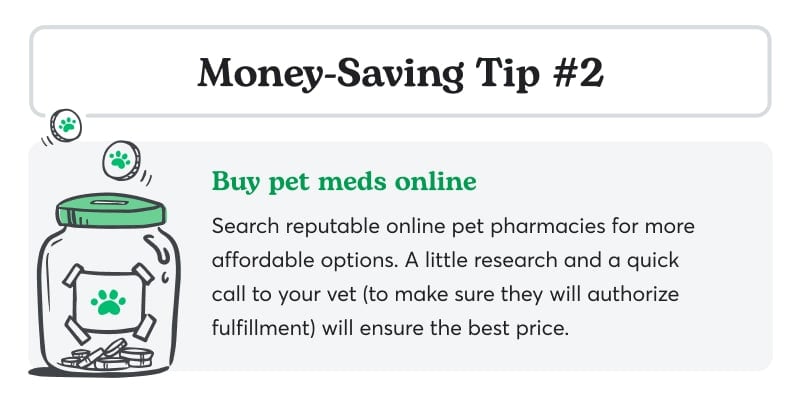
Did you know you can buy your pets’ medications online? Depending on where you order from, it’s also often cheaper than getting meds directly from your vet. Search for reputable online pet pharmacies, compare costs to find the best price, and make a quick call to your vet to make sure they can authorize fulfillment.
How Much Does a Cat Cost Per Year?
Once your cat is all settled in, it’s important to factor in the costs you can expect to pay throughout the year. These annual costs usually add up to between about $710–$2865 per year for the average cat parent.
| Item | From | To |
|---|---|---|
| Food | $450 | $1,860 |
| Litter | $150 | $720 |
| Toys | $5 | $155 |
| Annual vet check up | $105 | $130 |
| Total | $710 | $2,865 |
Let’s break these costs down.
Food costs: In 2024, cat parents can expect to spend between $450-$1860 on food, depending on the brand, type of food, and how much (and how often) your kitty needs to eat. The massive range of cat food varieties, from basic to premium and kibble to canned, and the relentless pace of inflation continue to make a major impact on the price of cat food.
Litter: Another essential for all indoor cats, litter typically costs between $150-$720 a year to keep your cat’s bathroom fresh and clean. Some cats can be picky and will only use the litter box if you get the right brand.
Toys: While cats aren’t as prone to regularly destroying their toys like dogs, it’s important to keep them active and stimulated with new toys to hunt and play with. Cat toys cost anywhere from $5 to $155 a year depending on what kind of toys your cat likes (from interactive robotic toys to cheap feather wands) and how often you replace them.
Routine vet visits: In 2024, your cat’s annual check up will be around $105-$130.
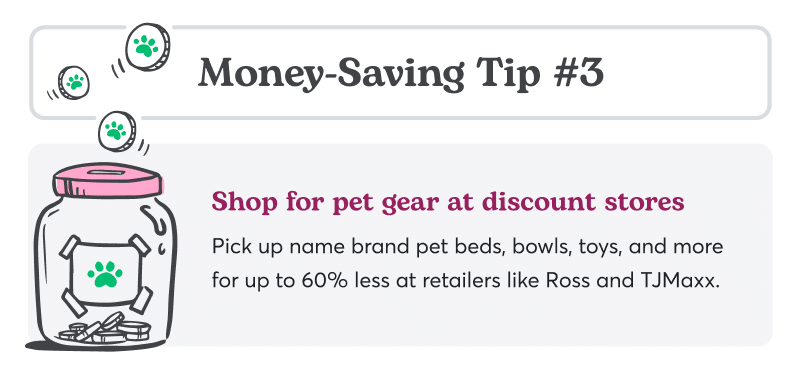
Discount stores aren’t just for people—you can pick up new, name brand pet gear like beds, bowls, and toys for up to 60% less at retailers like Ross and TJMaxx.
How Expensive Can a Cat Get? Additional Extras
| Item | From | To |
|---|---|---|
| Grooming | $50 | $80 |
| Drop in visits | $10 | $30 |
| Cat boarding or house sitting | $40 | $50 |
| Parasite Prevention | $30 | $110 |
| Apartment pet deposit | $150 | $500 |
| Emergency vet bills | $1,120 | $1,495 |
| Dental cleaning | $630 | $1,145 |
| Pet insurance | $10 | $100 |
| Litter Genie | $30 | $40 |
| Total | $2,080 | $3,540 |
Unexpected expenses may not come up for every pet parent, but it’s important to keep surprise costs in mind. These potential costs, which can range from absolutely necessary to optional, average between $2,080-$3,540 total.
Here’s what may factor into budgeting for your surprise costs:
Emergency vet visit: Hopefully you’ll never need to go to an emergency vet, but if you do, a visit can average anywhere from $1,120-$1,495 for services such as emergency surgeries, x-rays, imaging and the like.
Dental hygiene: An annual dental scaling is often recommended by vets. It’s not cheap—in 2024, you can except to pay between $630-$1,145 for the associated anesthesia, scaling, extractions, and other services—though routine dental care can be preventive medicine in the long run. (As an alternative, you can learn to brush your cat’s teeth—at your own risk—to save on this expense.)
Pet insurance: You may also opt for pet insurance, which can help with alleviating surprise or emergency costs. Pet insurance for cats can cost anywhere from $10-$100 per month ($120–$1200 per year). According to our research*, 36% of cat parents have pet insurance, 92% of whom agree it’s worth the added cost.
Cat boarding or sitting: Depending on your lifestyle and schedule, you may decide to book pet care for your cat. This could cost as little as $10 for a drop in visit upwards of $50 for overnight cat sitting in your home.
Professional grooming: A typical cat grooming appointment costs between $50-$800. If you have a long-haired cat or breed with a coat that requires regular maintenance, grooming is important to budget for (or learn how to do, humanely, yourself.)
Litter disposal system: A litter disposal system such as a Litter Genie (which is like a diaper pail, but for cat litter) are a level up from the traditional litter box, but many pet parents appreciate the convenience, and they are relatively inexpensive to purchase at about $30-$40.
Pet deposit: If you rent your home, you’ll likely need to pay additional pet rent or put down a pet deposit before bringing your cat home. This expense usually adds up to about $150-$500 annually for the average renter.
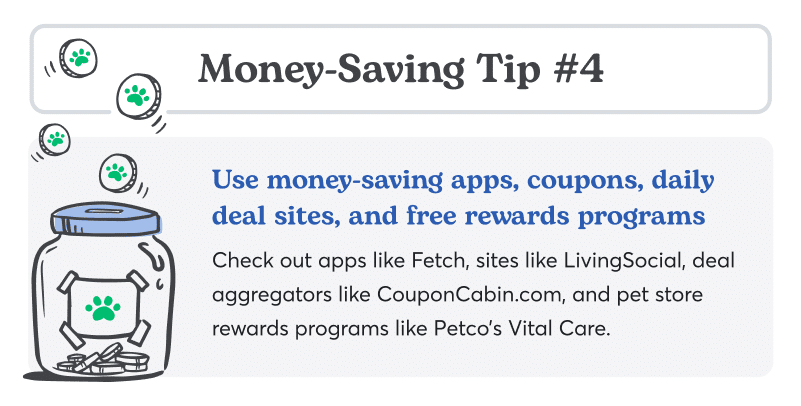
You don’t have to be an extreme couponer to save big on pet essentials. Try out money-saving apps like Fetch, sites like LivingSocial, deal aggregators like CouponCabin.com, and pet store rewards programs like Petco’s Vital Care, which offer everything from discounts and cash-back options to rewards points and deals on local pet services.
How Much Does End of Life Care Cost for a Cat?
As difficult it can be to imagine, a pet’s senior years and end of life care is important to keep in mind. A cat’s needs will change as they age, and it’s important as pet parents to show up for and support them at every stage of life.
Depending on your cat’s health and other considerations, the costs during your cat’s golden years and at the time of their death could be anywhere from $774 to $3,010.
| Item | From | To |
|---|---|---|
| Senior pet medication or prescriptions | $190 | $350 |
| Senior or prescription foods | $45 | $90 |
| Vet visits and medical costs | $105 | $1,495 |
| Euthanasia | $165 | $320 |
| Cremation | $80 | $245 |
| Private Cremation | $190 | $510 |
| Total | $775 | $3,010 |
These costs factor in products and services such as:
- Senior pet medication for pain or disease management: $190–$350 per year.
- Specially formulated senior cat food, or prescription cat food for age-related conditions such as urinary or kidney issues, could cost $45–$90 every month.
- More frequent veterinary care for testing, imaging, check ups, surgery, etc: $105–$1,495.
- Euthanasia can take place at a veterinarian’s office for around $165, though some families who can afford it prefer to have their pets put to sleep at home, where they are likely to be less stressed in their familiar surroundings. At-home euthanasia can cost up to $320.
- If you choose to have your pet cremated, your veterinary may charge in the range of $80–$245, while private services offered through pet memorial homes may range from $190–$510.
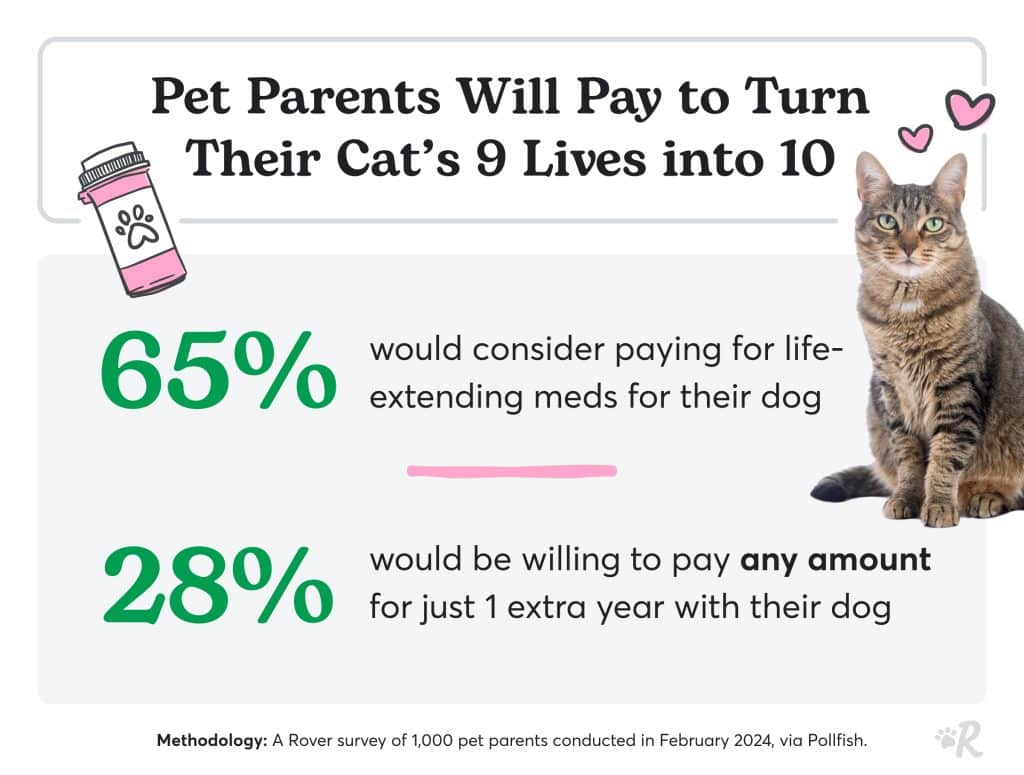
How much would you pay to help your cat live longer? Two thirds (65%) of pet parents would consider life extending medications for their cat, despite the potential added costs. In fact, 28% would be willing to pay any amount if it meant their cat would live for just one extra year*.
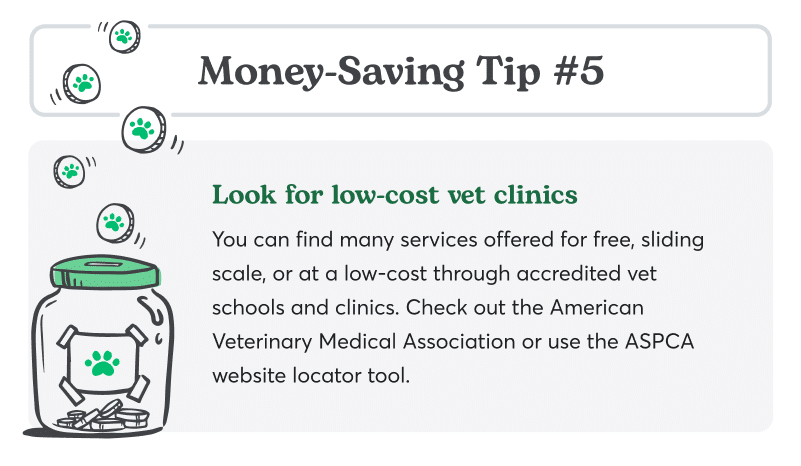
Many veterinary services, especially those needed for new or young pets (such as spay/neuter surgery and vaccinations) are offered for free, on a sliding scale, or at low-cost at some clinics. Find an accredited veterinary school through the American Veterinary Medical Association or use the ASPCA website locator tool to find these programs in your area.
Additional Resources
- Pet insurance can be a way to save on your pet budget over the lifetime of your cat. See if pet insurance is right for you in our article, How Much Does Pet Insurance Cost?
- Low-cost, subsidized, or free pet vaccinations are available in some areas. Learn more in our blog post, How to Find Low Cost Dog and Cat Vaccinations Near You.
- The Rover Store offers an array of cat gear, from the basics to the nice-to-haves. Shop beds, bowls, backpacks, toys, tunnels, travel items and more on the Rover Store.
Methodology
*A Rover survey of 1,000 pet parents conducted in February 2024, via Pollfish.
Sources
Apartments.com, ASPCA, Chewy, City of Des Moines, Iowa (Animal Licensing), Petco, Rebecca Greenstein, B.Sc., D.V.M. and Andrea Woroch of The Pet People, Rover, Seattle Animal Shelter, Seattle Humane Society, West Seattle Animal Hospital, Zillow
